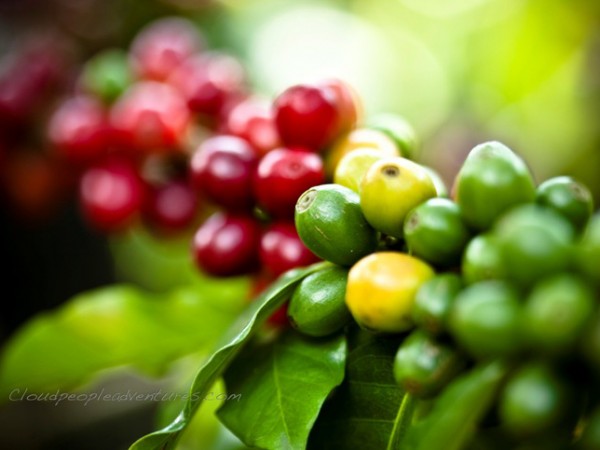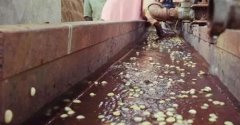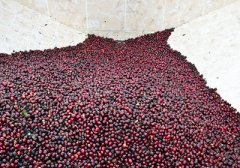The main reason for the unique flavor of Antigua coffee producing area in Guatemala

For professional baristas, please follow the coffee workshop (Wechat official account cafe_style)
Antigua is the most famous of the eight major producing areas in Guatemala, mainly because the coffee-growing areas are located in high-altitude volcanic areas and are surrounded by three volcanoes, while the cloud manor, the highest altitude in Antigua, is shrouded in clouds all the year round.
Guatemala is the most geologically rich country in Central and South America and the earliest coffee producer in Central America. Because Guatemala has a unique volcanic terrain and high altitude, the topography and soil environment there create a unique flavor of coffee beans. Seven major coffee producing regions in Guatemala-Antigua, Atilan, San Marcos, New Oriental, Koban, Farahannis, Vivette Nanguo.
The following four points are the main reasons for the unique micro-geography of Antigua.
(1) Multi-functional volcanic fertile soil:
There are three major volcanoes in Antigua, Acatenango (Acatenango is also the name of the 8th producing area in Guatemala), Fuego, Agua Volcanoes, among which Fuego- is an active volcano, which brings fertile volcanic soil and unique volcanic pumice to the Antigua area for years, which is the coolant after the eruption of volcanic magma, with porosity and thermal insulation, and is very suitable for moisturizing in the soil, because the annual rainfall in Antigua is only about 1000 mm. In the eight major producing areas, the rainfall is relatively small, and enough water is needed for coffee growth. the moisturizing ability of volcanic pumice here can more or less make up for the lack of rainfall, and at the same time, it is matched with the common shade trees in this area. so that the water is not easy to lose and let the coffee fruit have a unique flavor.
(2) High density shade trees:
In addition to shading, it can also prevent frost damage and form a unique microclimate. For the shade trees of St. Raphael, she planted Gravilea, which shaded and grew fruits of economic value. Due to the cold night in Antigua District, there will be occasional low temperature or even frost damage from December to February. High-density shade trees will play their role to avoid frosting coffee trees. At the same time, the groundwater level in Antigua area is not deep, and shade trees are easy to absorb water. Form a microclimate suitable for plant growth with the surrounding coffee trees.
(3) severe temperature difference between day and night:
The temperature difference between day and night should be at least more than 10 degrees, which will help the sweetness and unique flavor of coffee berries.
(4) High altitude:
For coffee trees growing at high altitude, the beans are hard, the aroma of coffee is higher, and the flavor is more prominent. in the case of St. Raphael Manor, the average annual temperature is 23.C, the annual rainfall is 1000 mm, and the soil is clay, sandy soil and limestone. very balanced structure and fertile, relative humidity 65.
Microlot: for coffee beans, the entire production area may be large, but there is a small plot of coffee beans that are so good that they are distinguished and supplied directly to traders. Or the amount of the estate is so small that it cannot reach the national acquisition level and can only be sold in small amounts (for the entire national production area), which is described in micro batches. To put it simply, it is in a batch of beans that have already performed well, and then further select the beans with the best performance.
Important Notice :
前街咖啡 FrontStreet Coffee has moved to new addredd:
FrontStreet Coffee Address: 315,Donghua East Road,GuangZhou
Tel:020 38364473
- Prev

Introduction of traditional wild G1 treatment methods and coffee bean flavor in Sidamo, Ethiopia
Professional baristas exchange please follow the coffee workshop (Wechat official account qianjiecoffee) Ethiopia Sidamo traditional wild G1 sun beans Ethiopia is the first country where coffee was discovered, coffee can be divided into two treatments. Washing treatment method II. Natural sun treatment. Nowadays, every producing area, cooperative and even small coffee farm in Ethiopia is produced at the same time.
- Next

Guatemala Antigua Flower God Coffee planting Environment and Baking suggestion Bella Carmona Flower God Coffee
For the exchange of professional baristas, please pay attention to the coffee workshop (Wechat official account cafe_style) Antigua, Guatemala (Antigua). The reason why it is the best producing area in the country is mainly due to the planting environment, which is located in three volcanic areas at high elevations, while no other producing areas are affected by sea breeze or high humidity air in the Great Lakes region.
Related
- Detailed explanation of Jadeite planting Land in Panamanian Jadeite Manor introduction to the grading system of Jadeite competitive bidding, Red bid, Green bid and Rose Summer
- Story of Coffee planting in Brenka region of Costa Rica Stonehenge Manor anaerobic heavy honey treatment of flavor mouth
- What's on the barrel of Blue Mountain Coffee beans?
- Can American coffee also pull flowers? How to use hot American style to pull out a good-looking pattern?
- Can you make a cold extract with coffee beans? What is the right proportion for cold-extracted coffee formula?
- Indonesian PWN Gold Mandrine Coffee Origin Features Flavor How to Chong? Mandolin coffee is American.
- A brief introduction to the flavor characteristics of Brazilian yellow bourbon coffee beans
- What is the effect of different water quality on the flavor of cold-extracted coffee? What kind of water is best for brewing coffee?
- Why do you think of Rose Summer whenever you mention Panamanian coffee?
- Introduction to the characteristics of authentic blue mountain coffee bean producing areas? What is the CIB Coffee Authority in Jamaica?

